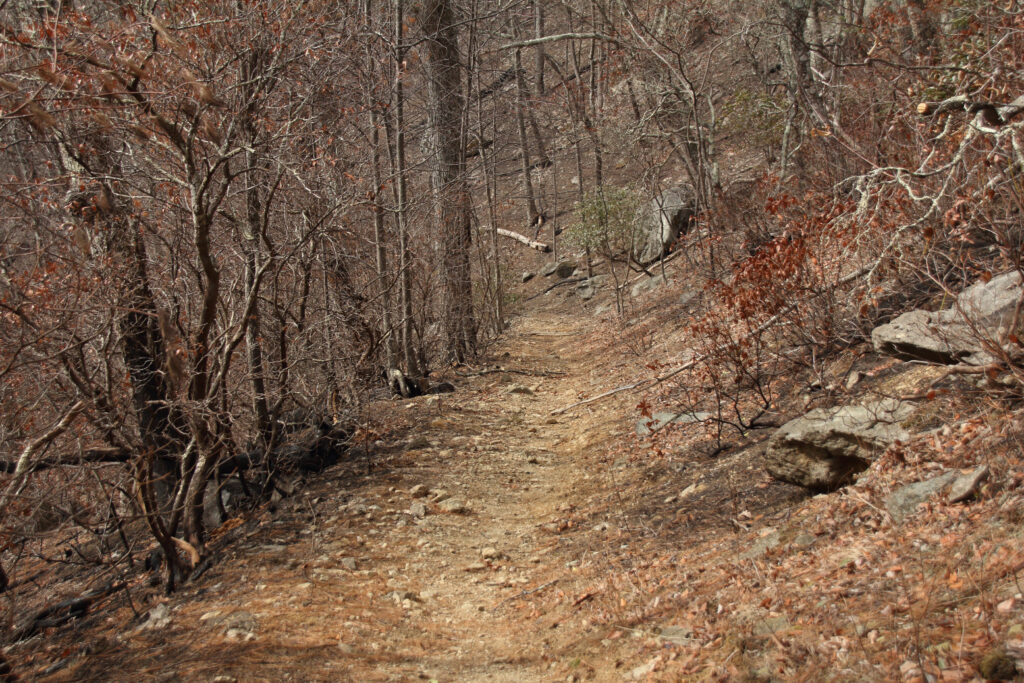Cold Mountain in the Mount Pleasant Scenic Area is one of our favorite hikes. It’s a six-mile loop on the Appalachian Trail and a spur trail that includes a large bald and a pine forest. In November 2016, a wildfire swept through the Mount Pleasant Scenic area, including the Cold Mountain trail. The fire was contained in December and, since then, we’ve been curious to see the damage and whether some of the special places along the trail had survived. We chose a spring-like February day to make the journey.
Although Cold Mountain is a day hike, not travel, for us, I’ve chosen to put these photos on my travel page. I wanted more space to show the trail than my hiking blog would allow.
From the start, the trail showed definite signs of fire damage.

There were charred branches on the ground and relatively little leaf litter in many places. FOr the most part, though, the trees had been spared, showing only minor damage to the very outer layers of bark. In some places the trail formed a barrier to the fire.

In other places, the fire’s path curved across the forest floor.

The bald was spared, and the little tree on the bald that we like to photograph remained as well.

Some damage to the grass was apparent at the edge of the bald…

…and the most significant fire damage we noted was to the trees at the southwest edge of the bald.



The rhododendron patch toward the middle of the spur trail was also damaged, and the stone wall that passes through the Scenic Area was clearly visible, though this may be due in part to it being winter.


There was additional charring along the spur trail, but some of the running cedar survived and will surely cover the ground again in the coming months.


There’s a big tree toward the end of the spur trail where we often stop for lunch. The tree survived, though the fire came close to some of the picnicking and camping areas.

Finally, the pine forest, which we had expected to sustain significant damage, seemed largely unscathed. Interestingly, the fire damage appeared to affect only one side of the trees.

We’ll visit Cold Mountain again, maybe in the summer or perhaps in the fall when the leaves change color. It will be interesting to see how the brush regrows and starts to hide the evidence of the fire. Within a year or two, a hiker new to the area may not even know that a fire had occurred.
(c) 2017 J. Atwater. All rights reserved.